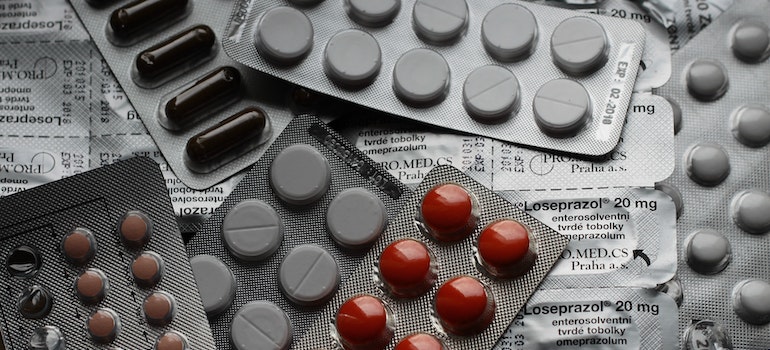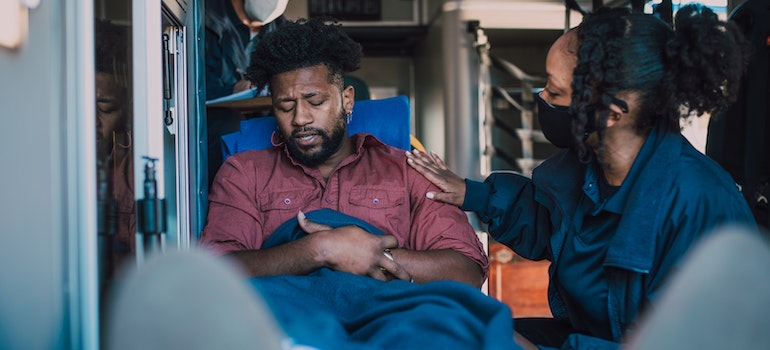Drug Addiction In Pennsylvania – Stats and Facts
Addiction is a widespread problem across the United States and, indeed, the whole world. But not every region suffers the same. People in different states abuse substances at different rates and in different ways. Local governments, activist groups, and researchers all track addiction trends in different parts of the country in order to better predict and prepare a response to the specific issues that the people they serve face. Knowledge of these trends can be helpful to people outside of these groups as well: parents worried about their children experimenting with drugs, people who take addictive medication, therapists, community leaders, and anyone else who may come into contact with addiction. Knowing facts and statistics about drug addiction in Pennsylvania can help everyone who lives here understand the problem better and help those in need.
Jump to Section
Addiction in the United States
According to the latest estimates from the National Institute on Alcohol Abuse and Alcoholism, more than 23 million adults in the United States struggle with some form of addiction. These 23 million make up around 7% of the entire population. Only a quarter of them will receive any treatment for their addiction. But even those who do seek treatment at a rehab center in Pennsylvania may not leave addiction behind permanently. Between 40% and 60% of addicts (depending on the substance abused and the severity of addiction) relapse, most within the first two years of sobriety.

Most Americans who suffer from addiction start abusing substances young; 9 out of 10 started drinking or doing drugs before the age of 18. Furthermore, the demographic most vulnerable to developing an addiction are men between the ages of 18 and 25. These statistics show that early intervention is the key to preventing addiction. Much of this information is not new – young adults, for example, have always been the most likely to abuse substances and men have always been overrepresented among addicts. However, there are some changes to be noted too.
Commonly abused substance
The majority of Americans who suffer from substance use disorder abuse alcohol. Alcohol abuse accounts for 73% of addiction cases in the country, making alcohol rehab Pennsylvania one of the most sought-after treatments. However, alcohol often serves as a gateway substance; many people start with excessive drinking before adding other substances into the mix or switching to illegal drugs altogether. Because of this, there is some overlap, and between 12% and 25% of addicts abuse both alcohol and drugs. When it comes to drugs, prescription medication is the most common addiction. The abuse of opioids in particular is still a major issue with fentanyl being the biggest cause of fatal overdoses in the country.
Recent trends
The biggest changes in substance abuse trends concern the number of people who suffer from addiction and the most frequently abused substances. The COVID-19 pandemic has affected the way Americans use and abuse drugs. Compared to 2019, there is a noticeable increase in the number of drug users as well as the severity of abuse. The rate of drug abuse has been steadily rising, from under 21 million in 2020 to more than 23 million in 2022 – an overall increase of more than 10%, with some individual months showing drug abuse rates up to 20% higher than at the same time in previous years. The stress and anxiety of living through a pandemic as well as an economic crisis have caused many people to turn to substances as a way of coping; those who were already abusing substances also reported taking higher doses in recent years.

Alcohol was and still is the most commonly abused substance in United States. This is unlikely to change in the near future as alcohol is comparatively easy to obtain and afford. The use of prescription medication is, however, on the rise. This shouldn’t come as a surprise – more people have been prescribed medication, especially for anxiety and depression, so more people have had the opportunity to abuse those medications. Contributing to the increasing need for prescription drug addiction treatment is the continuing opioid pandemic. Opioid abuse is still on the rise as are overdoses on opioids. The biggest contributor is fentanyl, which has overtaken heroin as the most common and most lethal opioid in the US.
Addiction by state
Not all states are affected by addiction in the same way. Addiction rates as well as overdose rates will vary by state and even by county within a state. The states with the highest percentage of the population that abuses substances are:
- Missouri
- West Virginia
- Michigan
- District of Columbia
- New Hampshire
The states with the highest rate of overdose deaths are:
- West Virginia (51.5 deaths per 100,000 people)
- Delaware (43.8 per 100,000)
- Maryland (37.2 per 100,000)
- Pennsylvania (36.1 per 100,000)
- Ohio (35.9 per 100,000)
Drug addiction in Pennsylvania
Addiction rates in Pennsylvania have fluctuated over the years. Until recently, it had some of the highest rates of addiction in the country, frequently making the unflattering top 20 or even top 10 lists of most addicted states. As of 2020, this is no longer true as the number of substance abuse disorder diagnoses has decreased. However, drug and alcohol treatment centers in Pennsylvania are far from empty. Addiction to specific substances is on the rise, making up for lower numbers in other areas. Pennsylvania is, for example, among the states that consume the most alcohol, one of the states hit hardest by the opioid epidemic, and the state with the fourth-highest rate of lethal overdoses. Drug addiction is, therefore, still a major concern in Pennsylvania.

Addiction rates in Pennsylvania
At first glance, addiction rates in Pennsylvania do not appear to be too high – with only around 3% of the population having an active substance use disorder in the last year, Pennsylvania has an addiction rate half that of the national average. However, in the country’s fifth most populous state, this translates to a very worrying absolute number of cases. Almost 300,000 Pennsylvanians currently suffer from drug or alcohol addiction and many more exhibit signs of addictive behavior, especially when it comes to drinking:
- around 60% of adults in Pennsylvania consume alcohol regularly
- almost half of those or 28% of the total population engage in binge drinking (5 or more drinks in 2 hours or less)
- almost 4% of Pennsylvania adults are addicted to alcohol
When it comes to drug addiction in Pennsylvania, the abuse of prescription medication and opioids in particular is the biggest problem. Pennsylvania’s high overdose rate of 36.1 overdose deaths per 100,000 people is mainly down to opioids which account for 65% of the cases. What is more, opioid overdoses are still on the rise, so it’s reasonable to expect the death toll of the opioid crisis in Pennsylvania to rise further.
Addiction in young Pennsylvanians
Drug addiction statistics are typically tracked in the adult population. But the warning signs of a developing addiction can be spotted already in one’s teen years or early adulthood. This makes tracking the consumption of alcohol and drugs (legal or illegal) among adolescents especially important. In Pennsylvania, it is the US Department of Health and Human Services that collects data on adolescent substance use. According to their statistics:
- 31% of students (under 20 years of age) had at least one drink in the past month
- 13% of students (under 20 years of age) binge drank at least once in the past month
- 33% of adolescents have tried marijuana at least once
- 6% of students have used inhalants
- 3% of students have used painkillers for reasons other than pain relief
- 3% of students have also used cocaine

Teenagers and young adults often experiment with drugs and alcohol. In part out of sheer curiosity, to push boundaries, and in part due to peer pressure, many teenagers will try alcohol and drugs before they are out of high school. Unfortunately, this increases their chance of becoming addicted later in life. as is the case with adults, alcohol is the substance of choice for the majority of young people. Unlike adults, however, teenagers and young adults tend to prefer marijuana to most drugs. So it’s not uncommon for a marijuana rehab center in Pennsylvania to offer special youth treatment programs.
Most commonly abused substances in Pennsylvania
Pennsylvania doesn’t differ drastically from other states when it comes to the most common causes of addiction. Alcohol accounts for the majority of cases overall, while alcohol or marijuana cover the majority of cases among youth. But the increase in people seeking Pennsylvania opioid treatment programs is what’s concerning. When marijuana is excluded, the most common types of drug addiction in Pennsylvania are:
- prescription painkillers (opioids): Overprescription and overuse of opioids is a major cause of addiction across the country. Pennsylvania is no different and may actually be worse than most with nearly half of the population being prescribed opioids at some point during the year. Almost 4% of those, or more than 400,000 people, reported misusing their medication.
- cocaine: Discounting marijuana, cocaine is the most commonly abuse illicit drug in Pennsylvania. More than 2% of the population or roughly 231,000 people over the age of 12 have used cocaine at least once in the past year. Although the rates of abuse are not as high as for opioids, cocaine’s high potential for lethal overdose makes its use very dangerous.
- heroin: Once the leading cause of overdose deaths, heroin is undoubtedly a dangerous drug to abuse. It is, however, no longer the most common one and not even the most common in its class. Prescription painkillers and synthetic opioids (primarily fentanyl) have overtaken it. But more than 64,000 people in Pennsylvania have still used it in the last year. It is an especially common choice for opioid addicts who can no longer afford prescription medication.
- meth: The impact of methamphetamine on the population of Pennsylvania is minor compared to opioids and depressants. However, it is still the second most abused stimulant in the state (behind cocaine). More than 60,000 Pennsylvanians reported abusing it in the last year.
Addiction trends in Pennsylvania
The way Pennsylvanians abuse substances changes in response to social conditions and the availability of different drugs. Two to three decades ago, heroin rehab centers were overflowing. However, the crisis of opioid overprescription that started in the 90s has caused prescription medication abuse to become far more common. The abuse of opioids as well as opioid overdoses are still on the rise today to the point where opioids are involved in the vast majority of drug-related deaths in the state:
- 52% of overdoses involved fentanyl
- 45% of overdoses involved heroin
- 25% of overdoses involved prescription opioids
By comparison, only 33% of overdoses involved benzodiazepines and only 27% involved cocaine. Opioids were sometimes used simultaneously even in overdoses due to benzos or cocaine. In total, opioids were detected in 85% of all overdoses. Other overdoses involved meth, prescription stimulants (Adderall or Ritalin), and synthetic marijuana. On average, 13-15 people die of an overdose every day in Pennsylvania; 70% of those are men. To make things worse, the total number of overdoses has more than doubled in the last five years. More than 80% of counties in Pennsylvania had an overdose rate higher than the national average, with Fulton, Cambria, Beaver, Armstrong, and Philadelphia recording the highest rates.

Drug addiction prevention work in Pennsylvania
To combat drug addiction in Pennsylvania, the state has passed laws and invested in programs intended to prevent or reduce substance abuse. Most of these are specifically aimed at opioids, as these are the biggest problem at the moment. David’s law is one such step toward preventing lethal overdoses; it allowed first responders to carry and administer naloxone, a drug that reverses the effect of opioids. Under the same law, family members of opioid users can also request a prescription for naloxone. A warm hand-off is another policy that aims to help people who struggle with addiction; under this program, addicts can receive a referral to a substance use treatment facility while in emergency care, without seeing their own doctor or a specialist.
However, much of the work to combat addiction focuses on prevention rather than treatment. Act 55 of the Opioid Misuse Prevention Act, for example, demands that public school students receive instruction on opioid abuse in grades 6-12. The idea is to teach children to avoid drugs and postpone experimentation with substances; since most addictions start already during the teen years, teaching school children about the dangers of opioid abuse should prevent future problems. The PA Pharmacists Association has its own opioid abuse prevention programs that aim to diminish the opioids in circulation by discouraging overprescription and overdispensation of opioids and encouraging the use of naloxone. The state-wide prescription take-back program is an important part of this prevention work. Under this program, people can return the prescription medication they haven’t taken to their pharmacy, stopping those unused medications from circulating on the black market.
Drug addiction treatment in Pennsylvania
As is the case in the rest of the country, only a small percentage of people with SUD seek help in Pennsylvania. But those who do have plenty of options. There are hundreds of addiction treatment programs in the state. Free options are available for those who cannot afford to pay for detox; some treatment centers also accept Medicaid and Medicare.

Different levels of care ensure that everyone can find treatment that suits their needs. People with severe cases of addiction should seek an inpatient drug rehab in Pennsylvania where they can recover in a controlled environment under constant supervision. For milder addiction cases, intensive and regular outpatient programs are available. In such programs, you attend therapy at the facility several times a week; while not in therapy, you can go on with your life thus not risking job loss or loss of contact with family and friends.
What do these statistics mean for you?
You can learn a few things from these facts about drug addiction in Pennsylvania. Firstly, opioids are a major addiction risk in PA. If you receive a prescription for an opioid, follow your doctor’s instructions on its use. When someone you know starts taking opioids, keep a close eye on them for signs of misuse and addiction. Secondly, alcohol consumption is at an all-time high in PA. Be mindful of your drinking and the drinking of those around you, lest it turn into an addiction. Thirdly, adolescents and young adults are most at risk to develop an addiction. If you have children or work with children, teach them about the dangers of substance abuse. And finally, remember that help is out there when you need it. Too few people seek treatment before it’s too late. Don’t be one of them.
sources:
https://drugabusestatistics.org/
https://www.dhs.pa.gov/Services/Assistance/Pages/Substance-Abuse.aspx
https://www.justice.gov/archive/ndic/pubs0/670/overview.htm
https://www.samhsa.gov/data/report/2017-2018-nsduh-state-specific-tables